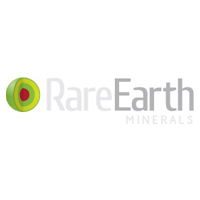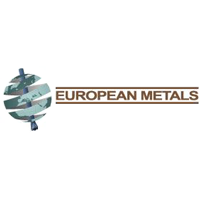Rare Earth Minerals Plc (LON:REM) Chief Executive Officer Kiran Mozaria caught up with DirectorsTalk for an exclusive interview to discuss the increased 337% of Indicated Mineral Resource and Bacanora Minerals’ funding
Q1: Now Kiran, what does this increase of 337% Indicated Mineral Resource mean for REM?
A1: The effect is twofold really, it’s a benefit for both the project and a benefit to the JV. I think there the overall increase in the resource shows the size of the magnitude and the scale of the deposit, if you were to combine the inferred and indicated resource, the actual total resource has increased from 7.4 million tonnes that we disclosed in May this year to 8.8 million tonnes. Most importantly, which is important for the mine planning, is the indicated resource is indicated as increased from 1.1 million tonnes to 5 million tonnes and there are even further exploration targets down-dipped for between another 2.4 to 4.6 million tonnes. So this is a substantial deposit, pervasive throughout this area, and this indicated mineral resource has also increased the grade which is also very important. For the JV which REM has a 42% economic interest, this is really significant for us because the Mexalit area has gone from 0.3 million tonnes in terms of lithium carbonate contained in the indicated category to 3.1 million tonnes which is over a tenfold increase in terms of indicated material so that’s important for REM and therefore it’s economic interest.
Q2: With this higher grade find though, is there a change in priorities and will it affect REM?
A2: Well the priorities have always been to develop the project and to achieve the best NPV for the Sonora Lithium Project as a whole. To achieve this, you’ve got to maximise the cash flow early in the life of the mine which is maximise the yield or the grade that you mine, minimise strip to ratio i.e. minimise the waste and the cost that you’re mining and maximise the recovery so make sure you don’t dilute and during the process of beneficiation to produce the final product, make sure you recover as much of that lithium carbonate as possible. So how this will be evaluated and how this will affect what that economic interest and value to REM really is determined by the mine plan which is coming through in the PFS in Q1 of next year. However, if we look at the MRE statement you can see 2 distinct points there, the lower clays in Ventana which we own 17.2% of, it’s 3,500 PPM grade, and Fleur which our economic interest is 42% has 4,300 PPM so between both of those, there are 2.8 million tonnes that will be taken as part of a mining plan and Mexalit’s has got the higher grade and certainly below clay, it’s got the highest grade of all the deposits there. I mean between them, taking a reasonable assumption in terms of mining loss and dilution recovery, you’ve got over 63 years of mine life there so it’s substantial just in that 2.8 million tonnes. So ultimately the strip ratio with a determining factor i.e. deciding on the life of the mine plan and how the economics get delivered back to REM either through the mining at Ventana or the Mexalit area, particularly Fleur.
Q3: Talking about recovery then, how will the resource be dug out of the ground and be monetised?
A3: Well, we’ve always envisaged open-pit operation, this is suitable because some of the deposits are very close to surface so a very low strip ratio so it’ll be an open-pit. You would envisage somewhere in the region, obviously depending on your mine plan, between 2.5 to 3.5 million tonnes of ore being mined per annum which is about 10,000 to 14,000 tonnes a day, that’s relatively small in the scheme of mining operations so it’s not a challenge there. You then take that ore, you pre-concentrate it through a physical process which would be scrubbing and floatation and that concentrates the grade and removes more physical waste so you then process less through the second stage which is sulphidation. Sulphidation then takes this clay and produces a lithium sulphide and that’s very unique of this deposit because the lithium sulphate allows you to either go down the lithium carbonate route or the lithium hydroxide route. You concentrate that lithium sulphate, you remove the impurities by changing pH and temperature and then to go down to lithium carbonate route, you would add sodium carbonate and then to go down the lithium hydroxide route, you could add sodium hydroxide called causticisation, therefore, you can produce both. So to monetise that, we have an open market which we’d be able to sell our product to our current offtaker and others that we’re in continuous discussions with.
Q4: So what are the next steps with regards to Bacanora funding?
A4: So as Bacanora said, they are fully funded to Bankable Feasibility study, after which we would see a mix of funding option become available to build, construct and deliver cash flow, that be bank debt, offtake funding or a combination of the 2 and something that we’re always actively working on and thinking about and considering. The PFS is progressing really well, FCF and the site continue to refine the LCE and Ausenco is costing the PFS at the moment. Also, what’s happening now which was the money we contributed to, they are going to run a 90 day continuous operation at the Sonora Lithium Project at its pilot plant which will deliver a quantum of samples to give to potential offtaker that we’re currently in discussions with. So as far as Rare Earth Minerals is concerned, we made our contribution of 17.2% to the funding, the £8.8 million funding, which as we’ve said will mark the advance of both the project and Mexalit JV through to BFS. So we are fine, that’s funded now and the JV’s, at JV level, they’re funded through to PFS so certainly everything is funded properly and certainly the project can advance to BFS without, we don’t think, any further funding and after that it’s going to become bank debt and offtaker funding, certainly what you would envisage with the project.


